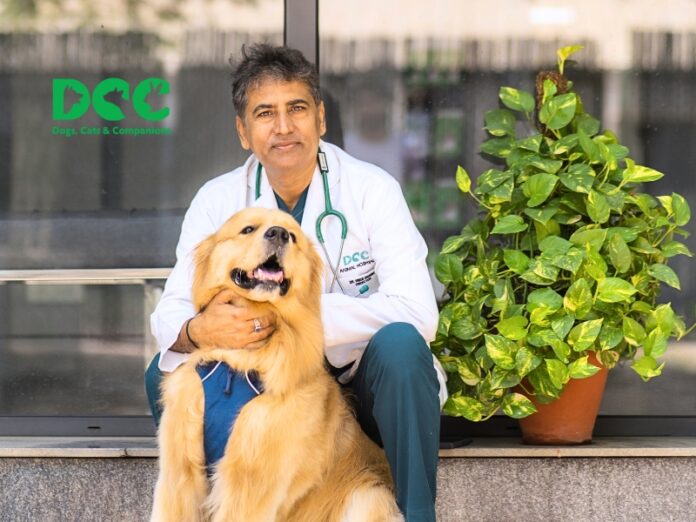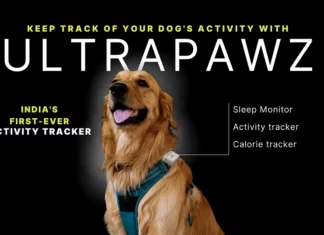In this exclusive interview, Petbiz India speaks with Dr. Vinod Sharma, Head of Veterinary Services at DCC Animal Hospital. Dr. Sharma offers unique insights into the dynamic landscape of pet care in India, highlighting the impact of technology, changing attitudes towards pets, and the importance of animal welfare. His global experience and leadership at DCC provide a valuable perspective on the future of the Indian pet industry.
Q- Dr. Sharma, you have a unique perspective with your global veterinary experience and current leadership at DCC. What trends in pet care are you seeing emerge in India compared to other markets?
“Comparing the trends, veterinary science is undergoing significant changes. It’s growing continuously and rapidly, not just economically, but in diagnostics, approaches, and veterinary education. Pet parents are becoming more aware, creating a demand that is not fully met, resulting in a supply shortage. However, veterinary colleges, veterinarians, and other companies, including manufacturing companies, are adapting swiftly to bridge this gap.
Reflecting on my earlier days, diagnostics were limited. We often had to wait and see for two days to determine if it was necessary because we faced challenges in finding places for CBC, X-rays, or CT/MRI scans.
Things have drastically changed in the last 15 years. Nowadays, almost every well-established clinic possesses essential diagnostic tools such as blood analyzers, X-ray machines, and ultrasound equipment. Additionally, dental hygiene, which was previously overlooked, is now a standard concern in pet clinics. Dental scaling machines are now commonplace.
Previously, no one considered endoscopy for pets in India, but now people opt for endoscopic and laparoscopic surgeries. CT scans and MRIs are routinely performed, offering an array of diagnostic options. Well-established companies (which I won’t name) are contributing significantly, setting up veterinary pathological diagnostic centers to aid pets and even larger animals with advanced diagnostic capabilities, which is truly remarkable.”
Q- The phrase “pet parent” speaks volumes about changing attitudes. How do you see this shift impacting product development, service offerings, and the broader pet industry?
“The saying goes, ‘The more aware you are, the better you do things.’ Education plays a significant role here. People, as I mentioned, are more educated; they know how to purchase products, demand things, and instigate change because, as we know, customers influence product development.
The same trend is evident in veterinary science. In the past, we would recommend certain products due to limitations. However, now, the world is easily accessible, and people are seeking a variety of high-quality products. They trust our recommendations but not blindly. They know how to scrutinize a product, read its content, and inquire about its shelf life.
This heightened awareness is evident in various aspects, including discussions about blood tests, x-rays, and the quality of diagnostic machines. It’s a significant shift; we must stay updated and not remain stuck in an era where discussions revolved around a single thermometer and stethoscope.
Now, we need a comprehensive diagnostic approach to address questions. Pet owners not only read the label and prescription but also inquire about dosage and frequency. In the past, I might have simply said, ‘Give it in the morning and evening,’ but now they ask, ‘How much quantity should I give?’ Education plays a crucial role here, fostering more awareness, and it’s encouraging to see that we are also staying updated on these advancements.”
Q- Technology is revolutionizing pet care – from wearables to telemedicine. What innovations are you most excited about, and how should pet businesses be preparing?
“When we discuss technology, it’s evident that there has been a significant transformation. I’m particularly enthusiastic about teleconsultancy and hospital management systems. Excitingly, there are mobile apps like the one we have inhouse called DCC PetConnect that facilitate tracking and managing various aspects on the go, offering convenience for both veterinarians and pet owners. These small innovations have greatly enhanced our practice bringing in efficiency.
Technological advancements, including AI, are likely to assist us further. Numerous software solutions have emerged, particularly in diagnostics. Previously, we relied on traditional x-rays; now, digital radiography (DR system) has become a valuable tool. Technology has not only simplified our work but also improved communication, efficiency, and overall quality.
In DCC, our team has dedicated substantial effort to developing a comprehensive software solution named VET 360. For an international market… also for use in India in the coming few weeks…we are in the final stages of the product’s development, and it will soon be available to the public.
As part of our commitment to addressing a significant market gap, our hospital management system and app, developed by DCC, are now expanding to the global market. Soon, individuals worldwide will be able to access and purchase our software. This endeavor reflects our dedication to fulfilling a crucial market need. We have worked diligently, and the impact will soon be evident.”

Q- Building a leading veterinary practice requires more than medical expertise. What advice do you have for other vets on practice management, staffing, and fostering a positive work environment?
Staffing and fostering a positive work environment are essential components in the veterinary practice. Establishing a successful and professional hospital is no easy feat. It requires a well-equipped, knowledgeable, and trained staff.
In order to run a top-notch establishment, your veterinarians need to be skilled, reception staff should be proficient, paramedics and handlers must be competent, and even housekeeping plays a crucial role in maintaining a clean and organized environment. It’s truly a collaborative effort where teamwork, coordination, and ongoing training are paramount in clinical practice.
While the job may appear straightforward, it is challenging to keep everything updated. The proficiency of your veterinarians, para-veterinarians, handlers, and the cleanliness of your facility all significantly impact your practice. Therefore, having a well-trained and qualified staff is crucial in upholding good practice habits.

When we discuss technology, it’s evident that there has been a significant transformation. I’m particularly enthusiastic about teleconsultancy and hospital management systems.
Dr Vinod Sharma, Head vet , dcc animal hospital
Q- Pet care is intensely emotional. How does DCC address both the needs of the animal and the concerns of the pet parent to deliver a superior client experience?
When it comes to the emotional aspect, it’s correctly stated that veterinary practice involves a significant emotional component. Pet parents invest a great deal of emotion, as do veterinarians in their practice. Balancing these emotions can be challenging at times, but, for the most part, we manage it very effectively. We often emphasize that a pet is not just a pet; we consider them a partner.
We care for them as a cherished member of the family and as a partner to us. To me, a pet is not merely a dog or a patient; it’s something indescribable, a being that holds someone else’s emotions, right in front of me. I have to diagnose, treat, and provide counseling to the pet parent and the staff.
In our line of work, we often find ourselves in emotional and challenging situations. Clients may be in tears, and the pet may be in pain, requiring us to make crucial decisions. Many times, we may feel a stillness within, unsure of how to react, but we always act responsibly. We hold the responsibility to respect the emotions involved and to provide the best possible care to the patient.
Handling these situations comes with experience; it’s not something learned overnight. Continuous learning and application are essential in this field.
Q- DCC’s mission envisions a strong pet health ecosystem in India. How can vet practices partner with other pet businesses (grooming, retail, etc.) to create a more integrated pet care landscape?
As mentioned, grooming and retail primarily focus on products, which are often consumables or applied to pets. We take this aspect very seriously at DCC. While some may perform checks or engage in commercial activities, we, as veterinarians, emphasize the importance of product verification. When clients engage in grooming with us, we encourage them to read labels, seek consultations, especially regarding nutrition.
In the realm of veterinarians and other business partners, such as grooming, pet care, boarding, and nutrition, veterinarians play a significant role. It’s not just a matter of giving instructions; for example, in grooming, clients often approach us with issues like skin problems, hair loss, or itching. We always advise clients to read labels, and we believe that companies should consider using local languages on labels to facilitate better understanding.
Furthermore, understanding the content is crucial. The suitability of a product can vary based on water quality, which differs from region to region. Therefore, it’s important to check and choose products carefully. The same applies to nutrition; it’s not a one-size-fits-all scenario. Climatic conditions vary across the country, and products need to be well-balanced for diverse environments.
In India, products need thorough research and proper market placement. Unfortunately, people often neglect reading instructions. My advice to pet parents is to follow instructions diligently. To manufacturers, I urge you to provide clear instructions on your products to avoid confusion. This is particularly important for medications, like tick treatments, where clear instructions are vital for proper usage. It’s crucial that people understand and follow the instructions provided by the company and the product.

Q- You’ve devoted significant effort to animal welfare. What role should responsible pet businesses play in supporting these causes and addressing challenges like pet overpopulation in India?
When it comes to animal welfare, based on my experience, it is the pet that often suffers. Making the right decisions, such as nurturing them, timely vaccination, providing proper nutrition, and behavior training, can significantly impact their well-being. Additionally, birth control measures need to be taken by pet owners for their own pets. For street animals, it’s crucial to ensure vaccination and proper neutering.Having adequate boarding facilities is essential, providing a safe place for animals. Shelters run by NGOs should maintain hygiene standards, ensuring that animals are well taken care of, receiving proper feeding, neutering, and, when necessary, being released back into the same area from where they were initially picked up.
Q- Finally, for young professionals entering the pet industry, what key piece of advice would you offer to ensure a fulfilling and impactful career?
In one concise line: “Be responsible and respectful in your profession, understanding that responsibility is a crucial teacher. The journey to becoming a veterinarian often involves diverse paths; however, beyond that, empathy is essential, especially when dealing with voiceless animals. To aspiring students and young vets, my advice is to be devoted and compassionate, recognizing the importance of respect, knowledge, and gathering experiences to excel in the profession. For those already in college or aspiring to be vets, the key is to love animals, cherish your profession, and respect the love received from the animals you treat, as their gratitude is expressed through actions like wagging tails – it’s all about love.”

About the author

Tushar Kanchan, Publisher & Editor
Tushar Kanchan is the editor and publisher of Petbizindia.com. As a dedicated connector within the pet industry, committed to fostering a vibrant community of entrepreneurs, innovators, and professionals. Tushar believes in collaboration and knowledge-sharing are essential for the advancement of the Indian pet care landscape.

















